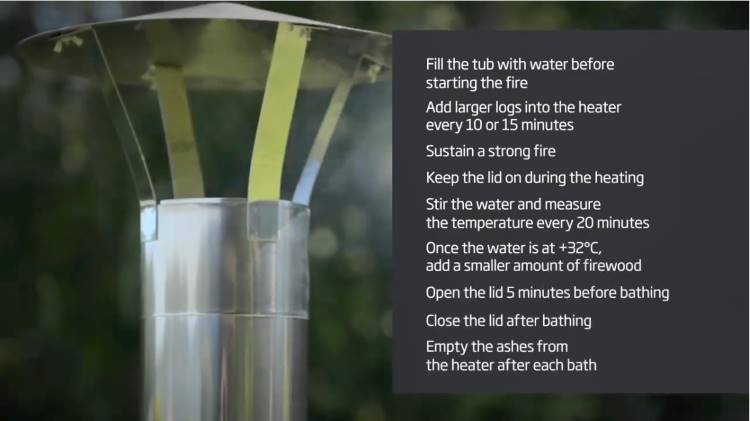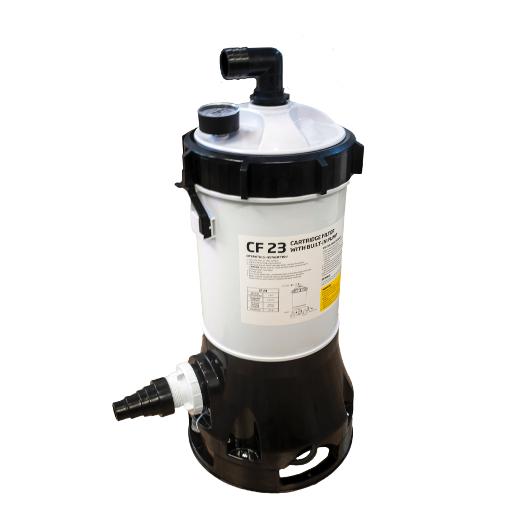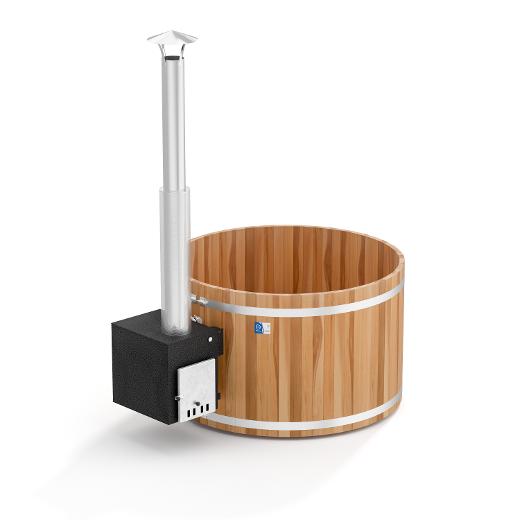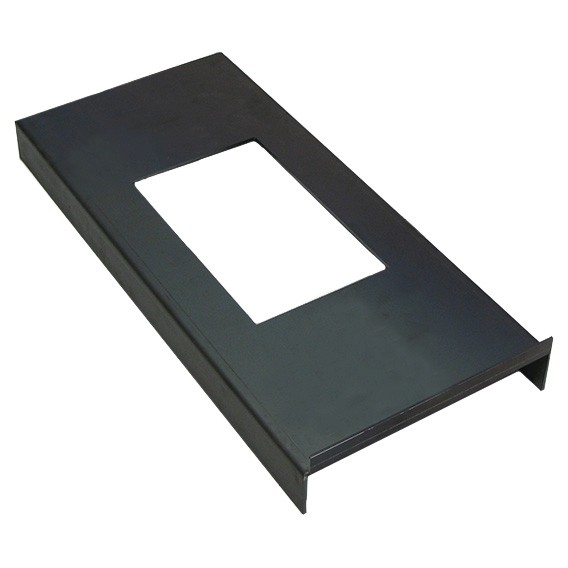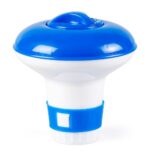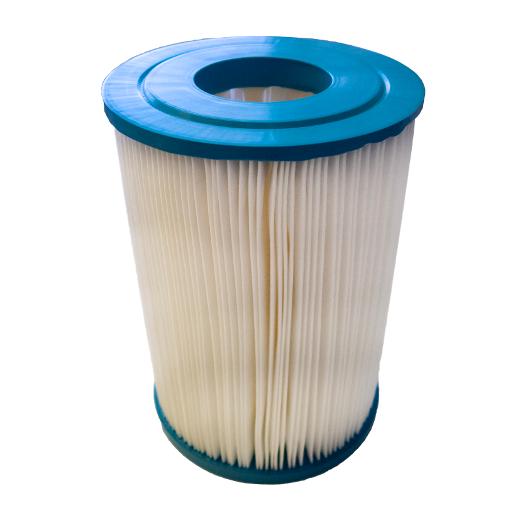Out of stock
Out of stock
-
The additional heater is a safe and simple solution for heating the hot tub. The heater is easy to install next to the regular stove and it is connected to the power supply with a plug. The desired temperature is set using a control knob. Carefully selected materials and components guarantee high quality and durability of the heater. The heater body is made entirely of strong stainless steel and the resistors are made of titanium. The additional heater is easy to maintain and spare parts are available if required.
Read More$1,090.95
Out of stock
Email when stock available
Additional Heater for Hot Tubs Harvia 3000 W / 230 V
The additional heater for hot tubs Harvia 3000 W / 230 V is a high quality water heating unit for hot tubs, designed and manufactured in Finland, for outdoor use. The additional heater is meant for maintaining the temperature of the pool water. It can be used together with Kirami hot tub heater.
The product contains:
- PVC pipe D75mm 230mm
- 2 x Connecting hose id 75 / 95 mm
- 4 x Hose clamp 80-85 W1
The additional heater is a safe and simple solution for heating the hot tub. The heater is easy to install next to the regular stove and it is connected to the power supply with a plug. The desired temperature is set using a control knob. Carefully selected materials and components guarantee high quality and durability of the heater. The heater body is made entirely of strong stainless steel and the resistors are made of titanium. The additional heater is easy to maintain and spare parts are available if required.
|
Weight
|
6kg |
| Packing length | 60cm |
| Packing width |
33.5cm
|
| Packing height | 15.5cm |
Product number Harvia HYB300230S Certificates CE EAC
| Weight | 13 lbs |
|---|---|
| Dimensions | 23 × 14 × 6 in |
Tub heater
Improve hot tubbing safety with Kirami products
Q: What are the required fire safety distances for the heater and the chimney?
A: The fire chamber of the heater is surrounded by a water jacket. This means that the temperature of the heater will not exceed the temperature of the water inside the heater. However, there needs to be a non-flammable protector in front of the fire chamber in case sparks or embers drop out of the chamber. Our selection of accessories includes a fireproof plate to protect the front of the fire chamber. As for chimneys, please refer to the fire safety distances presented in our instructions.
Q: Is a heater that is placed inside the tub more efficient than an external heater?
A: Almost all external heaters are more efficient than internal models. An external heater is considerably more user-friendly than an internal model, and it also saves bathing space.
Q: Does the heater become hot?
A: The external surface of the heater will only become as hot as the bathwater. However, please note that the chimney and the heater door become hotter than the bathwater, as they are not in direct contact with the water.
Q: Does the heater require soot removal?
A: The internal walls and pipes of the heater must be cleaned of soot when necessary. If you use a chimney cap with a spark catcher, it should also be cleaned every now and then to ensure a good draught.
Q: How often should I empty the ashes?
A: The ashes must be emptied after every heating to prevent the grates from burning out prematurely and to ensure a good draught while heating.
Q: There is humidity inside the heater. Is the heater broken?
A: The temperature difference between cold water and warm, humid air causes condensation inside the ash compartment, so there are probably no leaks in the heater even if there is some humidity inside the fire chamber. Considerable condensation may occur when you light a fire, but if the water level in the tub does not change, there are no leaks.
Q: The heater has lost some of its efficiency and the heating takes longer than usual. What should I do?
A: You should empty the coals and ashes from the fire chamber and clean the grates. We also recommend cleaning the chamber with Kirami Nokipesu. Soot accumulates on the walls of the fire chamber over time, reducing the heat conductivity. Nokipesu enables you to easily remove even the most stubborn soot deposits.
Q: How can I reduce the amount of smoke?
A: Use suitably small, dry and clean firewood. Be sure to also maintain as large a fire as possible and make sure that the firewood is not packed too tightly in the chamber. If your heater features adjustable air intakes, experiment to find the optimal supply of make-up air. One alternative is to use Kirami Heat It Up wood charcoal, which burns at a high temperature and cleanly without visible smoke.
Q: The instructions mention a new ash box. Where can I get one?
A: The ash box is an accessory that you can order from a retailer or on the Kirami web store.
Q: How can I reduce the amount of sparks?
A: If sparks are causing you trouble, we recommend using our spark shield. When you use birch or better wood, the amount of sparks exiting the chimney is very minimal, in which case a conventional chimney cap will suffice. Using other kinds of wood (pine, spruce, waste wood) will cause more sparks, and when this poses a threat to safety, we recommend using a spark shield, which minimises the amount of sparks released into the environment. Like a conventional chimney cap, the spark shield also protects the chimney from rain. During dry seasons, or if there is a risk of the sparks igniting something, you should practice caution and use firewood that does not cause sparks. Never leave the fire unsupervised.
Q: Can I install a pump between the hot tub and the heater?
A: This is prohibited, as the heaters are only designed for the natural water flow, and using a pump would cause the pressure inside the heater to increase. Starting and stopping the pump creates pressure shocks inside the heater that could break the heater.
Q: What is a magnesium anode rod and what are the advantages of it?
A: Kirami’s magnesium anode rod protects your heater from corrosion that chlorine and sea water can cause. The rod should be checked annually and replaced when necessary.
Kirami anode rod – new vs old used anode rod
Q: Why the stove does not have an air grid?
A: Cult and Macu stoves do not have an air grid as a standard. At the beginning of 2018, a place for a grid has been added on the hatch. There is now a possibility to buy and install the grid for those stoves as an accessory. The air grid helps, for example, to start the fire in windy conditions. To get the maximum power from the combustion the grid must be fully open. When you wish to slow down the combustion, you can diminish the opening.
Heating
Q: What kind of wood should I use?
A: The best and most cost-efficient type of wood is dry, chopped birch (Nordic countries). When burning hardwood, always use a separate ash box made of stainless steel. Of course, other wood species and types can be used as well. Generally speaking, the higher the density of the wood, the better the heating value, and the most essential factor is the dryness of the firewood.
Q: How much wood do I need for heating the hot tub?
A: Depending on the time of year, heating the hot tub takes 60–120 litres of dry birch firewood (Nordic countries).
The amount of firewood needed varies depending on factors such as the starting temperature of the water, the moisture content and quality of the wood, and the outside temperature. Below are estimates of how many loads of firewood each heater model consumes.
Cult: approx. 7–10 loads
Macu: approx. 6–9 loads
Cube: approx. 5–8 loads
Tube: approx. 4–7 loads
Q: What should I take into account when heating the hot tub?
A: First of all, make sure that there is water in the tub! Even if you have heated the tub the night before, check the state of the tub anyway. If you want to heat the water as quickly as possible, use dry and high-quality firewood. Using a tub cover shortens the heating time significantly. Empty the heater of ashes before heating, including the top of the grates. Maintain a large fire and add firewood once every 10–15 minutes to make sure that the fire does not go out in the middle of the heating process. The water is circulated by the force of gravity, meaning that if the fire goes out, the circulation slows down and it takes time to restart the fire and restore the circulation.
Kirami Mixing paddle is used for mixing the water at the heating stage, to even out the layered temperature.
Q: How is the water heated?
A: The bathwater is heated with a wood-burning heater supplied with the hot tub, so no electricity is needed. When heated, the heater must be full of water, meaning that the water level of the tub must be above the upper lead-through. When heated, the water becomes lighter in weight, whereby it rises to the upper part of the heater and is transferred into the tub through the circulation pipe. Cold water in the tub descends to the bottom and is transferred into the heater through the lower circulation pipe.
Q: How quickly can the bathwater be heated?
A: The heating rate of the bathwater depends on the power of the heater, the size of the tub, the quality of the firewood, the air temperature and whether or not you use a tub cover. For example, in a 0 °C temperature, a 1,450-litre tub will take approximately 2–3 hours to heat.For heating, we recommend using dry wood chopped into small pieces. Using large and moist firewood may even double the heating time.
Maintenance heater
Q: Is it possible to keep water in the tub at a low heat during winter?
A: Tubtainer2, which can be purchased as an accessory, allows you to keep water in the tub year-round. Tubtainer2 maintains a sufficient temperature so that the tub will not freeze (recommended minimum temperature 15°C). It also includes a filter with which the water will remain clean and the water won’t need to be changed after each use. Tubtainer2 maintains the set temperature with an electric resistance of two kilowatts..
Q: Can I replace a wood-fuelled heater with Tubtainer2?
A: When the tub is covered, Tubtainer2 is able to keep the bathwater unfrozen during freezing outdoor temperatures, up to a specific point. To heat the water to a suitable bathing temperature, you should also have a wood-fuelled heater for your tub. In summer, you can also use Tubtainer2 for heating. In practice, heating cold water to bathing temperature will be slow with Tubtainer2, as the power of Kirami’s smallest heaters is ten times higher than Tubtainer2’s, and the larger heaters are even more powerful.
Q: How do I install Tubtainer2, and what should I take into account in the installation process?
A: The Tubtainer2 maintenance heater is installed the same way as the filtering system: with two hoses connected to the tub. The suction hose is connected to the outlet valve, while the return hose requires a lead-through drilled into the wall of the tub. If you use Tubtainer2 to replace the heater entirely, a specific set of pipes needs to be installed in the heater’s position.
Q: How often should I replace the filter?
A: Tubtainer2 has a manometer which will indicate when the filter needs to be replaced. The cleaning interval depends on how often the tub is used. We recommend that you purchase a spare cartridge so that you can replace a clogged cartridge quickly. You can clean the cartridge with a brush under running water.
Enjoy the perfect bathing time! Discover our wide range of accessories and learn more about Kirami’s various hot tub models!










